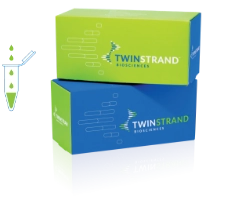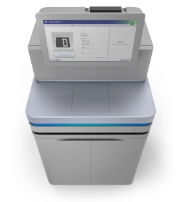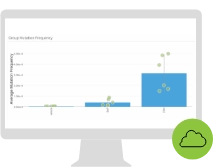AMES Test |
Mammalian Cell Gene Mutation |
Transgenic Rodent (TGR) Assay |
Pig-a Assay |
DuplexSeqTM Mutagenesis Assays |
|
|---|---|---|---|---|---|
| Compatible with wild-type rodents | |||||
| Compatible with all standard tissue types | |||||
| Compatible with in vitro model systems | |||||
| Can identify the specific mutations induced | |||||
| Provides information about mutagenic mechanism |
TwinStrand’s DuplexSeqTM Mutagenesis Assays use error-corrected NGS (ecNGS) technology to characterize DNA mutations and calculate mutational frequencies.
DuplexSeqTM Mutagenesis Assays include both the sample preparation kit and software that automatically analyzes your data and generates an easy-to-read report. This simple system is easily added to any genetic toxicology program—without the need for bioinformatics expertise.



| Kit Type | Product Name | Number of Reactions | Product Number |
|---|---|---|---|
| Human | TwinStrand Duplex Sequencing® Mutagenesis Panel (Human-50), v1.0 | 24 | 06-1005-02 |
| 48 | 06-1005-03 | ||
| Mouse | TwinStrand Duplex Sequencing® Mutagenesis Panel (Mouse-50), v1.0 | 24 | 06-1006-02 |
| 48 | 06-1006-03 | ||
| Rat | TwinStrand Duplex Sequencing® Mutagenesis Panel (Rat-50), v1.0 | 24 | 06-1007-02 |
| 48 | 06-1007-03 |
We’ve published with our collaborators a significant amount of data in prestigious, peer-reviewed journals that demonstrate the benefits of Duplex Sequencing in genetic toxicology.
Error-corrected next-generation sequencing to advance nonclinical genotoxicity and carcinogenicity testing
The coming revolution in mutagenicity testing: Application of Duplex Sequencing to quantify and characterize mutations
TwinStrand Biosciences, Inc.
3131 Elliott Ave, Suite 750 • Seattle, WA 98121 • USA
+1 (877) 202-8946
For Research Use Only. Not for use in diagnostic procedures.
©2024 TwinStrand Biosciences, Inc. All rights reserved. All trademarks are the property of TwinStrand Biosciences, Inc. or their respective owners. Legal Notices
Stay up to date
Danielle LeBlanc is a Biologist at Health Canada under the supervision of Dr. Francesco Marchetti. Danielle completed her undergraduate and Masters work at Carleton University in Ottawa. Danielle is currently focusing on the implementation of Duplex Sequencing for in vivo mutagenesis assessment at Health Canada.
In her spare time, she loves to cross-country ski, bake cupcakes and craft cocktails.
Dr. Francesco Marchetti is a Senior Research Scientist at Health Canada and Adjunct Research Professor at Carleton University. He chairs the Germ Cell workgroup of the Health and Environmental Science Institute’s Genetic Toxicology Technical Committee and is a member of the Organisation for the Economic Co-Operation and Development Expert Group on Genotoxicity Testing. Dr. Marchetti has authored over 125 peer-reviewed publications.
He was Editor-In-Chief of Environmental and Molecular Mutagenesis (EMM) during 2012-2016 and serves on the editorial boards of EMM and Mutagenesis. Dr. Marchetti is the current President of the Environmental Mutagenesis and Genomic Society.